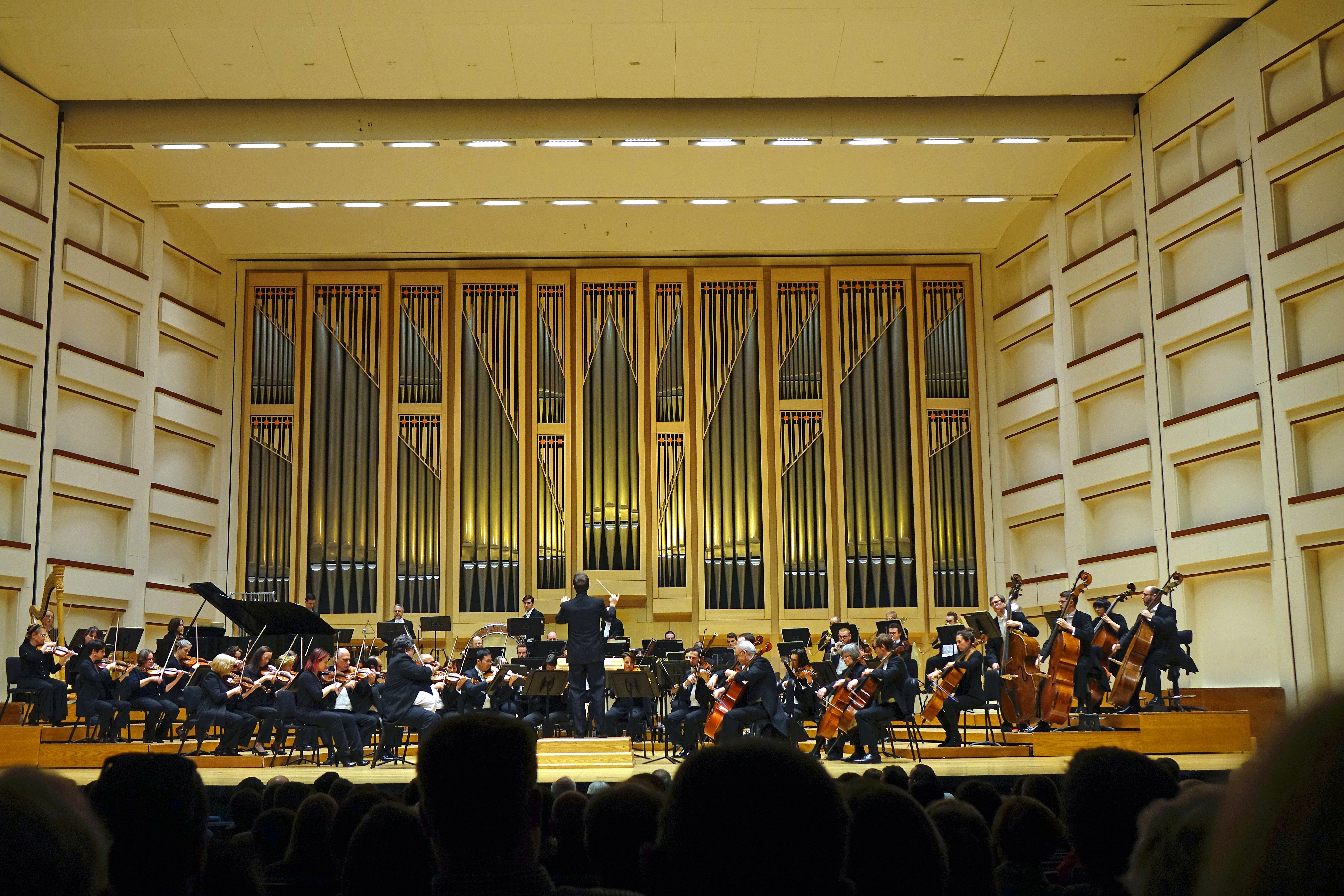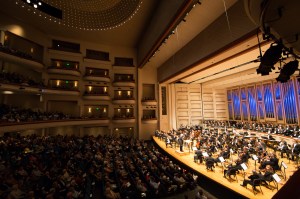Review: A Sea Symphony at Belk Theater
By Perry Tannenbaum

April 26, 2024, Charlotte, NC – Whether you love the sea for its surf, its tidal rhythms, its abundance of exotic creatures large and small, or its sheer vastness, Charlotte Symphony’s A Sea Symphony will deliver manifold delights – and a thrilling storm or two at no extra charge. The marquee piece, also known as Ralph Vaughan Williams’ Symphony No. 1, soars with enough poetry and ambition to be compared with Beethoven’s Ninth. The four-movement piece, studded throughout with the poetry of Walt Whitman, takes only five minutes less the Beethoven colossus to play, with the assistance of the Charlotte Master Chorale and two fine guest soloists, soprano Georgia Jarman and bass-baritone Andrew Foster-Williams. More than one Symphony season has concluded with the mighty Choral Symphony and nothing else on the bill, so it is quite generous that conductor laureate Christopher Warren-Green precedes A Sea Symphony with two other substantial seafaring works, Benjamin Britten’s Peter Grimes: Four Sea Interludes and Grace Williams’ Sea Sketches.
Artistically, opening night was a conquering hero’s triumphant return. Yet it was a mixed bag from a box office perspective. While the orchestra level was conspicuous disappointment, pocked with empty seats on a cloudy, balmy night, the grand tier was packed with loyalists and plutocrats, rewarding the performers’ upward gaze (if they ignored the sparsely populated balconies above). Warren-Green’s affinity for this music from the British Isles proved to be as deep as Vaughan Williams’ affection for Whitman.
Across the Carolinas, I’d venture to say that full-length productions of Britten operas are thinly scattered over the years, even at Spoleto Festival USA (Curlew River) or Brevard (A Midsummer Night’s Dream and The Turn of the Screw). Nobody around here realizes that Britten set another great classic, Herman Melville’s Billy Budd, to music?The scraps of Peter Grimes that Warren-Green brings us are therefore hugely philanthropic, even if they reprise a work the maestro introduced at Belk Theater ten years back.

In the first three of the four movements, Warren-Green reminded us how exquisitely he crafted color and texture. Following a dreamy “Dawn,” the middle movements were especially sublime. “Sunday Morning” was dotted with tubular bells – you could almost feel the mist they were ringing through – and that tolling was echoed in “Moonlight” with a simple conspiracy between harpist Andrea Mumm and flutist Amy Orsinger Whitehead. Not really simple if you listened closely, for the single notes they played were not in strictly regular tempo. The magical ritardando was guided by Warren-Green’s instinctive baton. Most everybody will be impressed with the orchestral power of the “Storm,” fueled upstage by the percussionists, but Britten provides an added wallop with the lull in his tempest, ominous with subterranean quaking.
If he weren’t almost a Welshman by birth, you wonder how Warren-Green would have become smitten by the music of Grace Williams (1906-1977). Looking the Welshwoman up in Spotify or Apple Music will likely steer you wrong – to a Christian music artist by the same name who looks, depending on how her hair is combed, like either Renee Fleming or Celine Dion on her album covers. If you dig a bit deeper on Spotify and Apple Classical, you can find a fine 2000 recording of the five Sea Sketches for string orchestra on the CBC label with Roy Goodman leading the Manitoba Chamber Orchestra. As you might imagine in a piece that is as meticulously pictorial as Debussy’s La Mer, a live performance discloses buried treasures above and beyond Warren-Green’s more sensitive response to the score. Most memorable for me were the ethereal “Sailing Song” and the concluding “Calm Sea in Summer,” distinguished by its beautifully modulating tempo and its simulation of the quiet wash of wet sands on the shore.
All isn’t dainty, however, though the opening “High Wind” isn’t blessed with full orchestral artillery. That movement is powerful in its own right, and “Breakers” is definitely punchy. In the middle of the five pieces, “Channel Sirens” might be the most intriguing, not seeming to target either the glamorous temptresses of The Odyssey or any kind of alarm. Williams may have been picturing tugboats in muddy or nocturnal waters, I don’t know. The music cast a uniquely portentous spell.

You really need to hear A Sea Symphony in live performance, not only for the bone-rattling surges of orchestra, chorus, and vocal soloists resounding through the Belk, but for the extended pianissimo at the end of the concluding “Explorers” movement. The outer movements, “A Song for All Seas, All Ships” and “The Explorers,” are epics in themselves, fittingly for Whitman containing multitudes. You might feel that we have reached the end of this mighty chorale when the opening movement ends, but it we are less than a third of the way into our voyage. The finale will be longer, grander, and more oceanic. In between, there’s the relative quiescence of “On the Beach at Night Alone” and the jaunty heraldic “Scherzo: The Waves,” where the Master Chorale, wonderfully prepared by Kenney Potter, give the lead vocalists a well-needed rest before their final cosmic exploits.
And if you’re familiar with Whitman’s “A Passage to India,” you know that cosmic is no exaggeration as the souls of the singers join the Good Gray Poet, in his most pantheistic and mystic dimensions, beyond the seas to the far reaches of the universe. Some big names have been attracted to the baritone part, including Thomas Hampson and Simon Keenlyside on the CDs that I own, but Foster-Williams emphatically holds his own – while Jarman easily surpasses most of the sopranos I’ve heard on recordings of this demanding work, nicely combining the power and beauty of both camps. She’s formidable as both a dramatic and lyric soprano.




